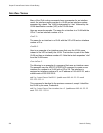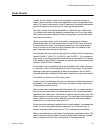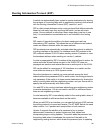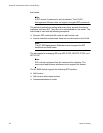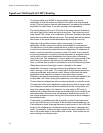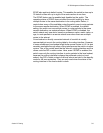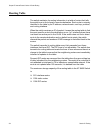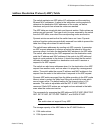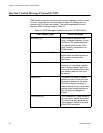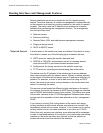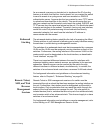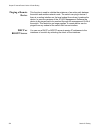AT-S63 Management Software Features Guide
Section VII: Routing 313
ECMP also applies to default routes. This enables the switch to store up to
32 default routes with up to eight of the routes active at one time.
The ECMP feature can be enabled and disabled on the switch. The
operating status of ECMP does not affect the switch’s ability to store
multiple routes to the same destination in its routing table. Rather, it
controls how many of the available routes the switch uses to route packets
to the same remote destination. When ECMP is enabled, the default
setting, the switch can use multiple routes to route packets to the same
remote destination, as explained above. When ECMP is disabled, the
switch selects only one route, based on preference value, metric value, or
age, to route packets to a remote subnet even when there are multiple
routes to the subnet.
A local subnet or directly connected network of a switch is usually
represented just once in the routing table by its routing interface. However,
in some situations a local subnet might have several routes to it if it is also
remotely reachable through other routing interfaces on the switch via other
routers. One of the routes would be the subnet’s routing interface and the
others could be RIP or static routes. Here, even if ECMP is enabled, the
switch uses only the routing interface to route packets to the local subnet,
because the routing interface is always the preferred route to a local
subnet. Any RIP or static routes to the local subnet are held in the standby
mode for fail-over protection. They are only used when the status of the
routing interface to the local subnet is down.




